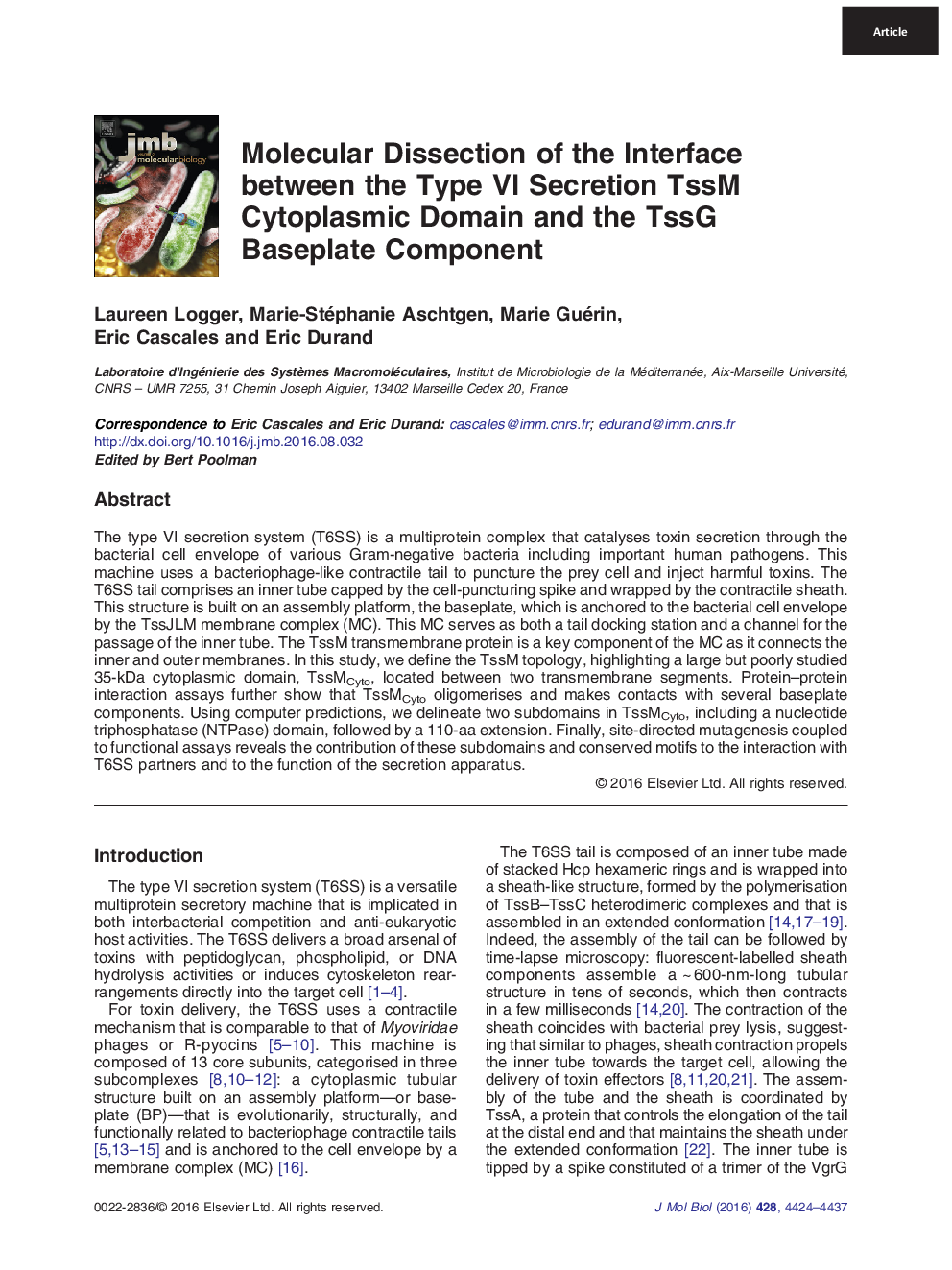| Article ID | Journal | Published Year | Pages | File Type |
|---|---|---|---|---|
| 5532887 | Journal of Molecular Biology | 2016 | 14 Pages |
â¢The T6SS TssM protein is constituted of three transmembrane segments.â¢Transmembrane helices 2 and 3 delimitate a 35-kDa cytoplasmic domain.â¢The TssM cytoplasmic loop is subdivided into two domains with NTPase and DPY30 folds.â¢The TssM NTPase domain is lacking the catalytic site but interacts with TssK.â¢The TssM DPY30 domain mediates oligomerisation and interaction with TssG.
The type VI secretion system (T6SS) is a multiprotein complex that catalyses toxin secretion through the bacterial cell envelope of various Gram-negative bacteria including important human pathogens. This machine uses a bacteriophage-like contractile tail to puncture the prey cell and inject harmful toxins. The T6SS tail comprises an inner tube capped by the cell-puncturing spike and wrapped by the contractile sheath. This structure is built on an assembly platform, the baseplate, which is anchored to the bacterial cell envelope by the TssJLM membrane complex (MC). This MC serves as both a tail docking station and a channel for the passage of the inner tube. The TssM transmembrane protein is a key component of the MC as it connects the inner and outer membranes. In this study, we define the TssM topology, highlighting a large but poorly studied 35-kDa cytoplasmic domain, TssMCyto, located between two transmembrane segments. Protein-protein interaction assays further show that TssMCyto oligomerises and makes contacts with several baseplate components. Using computer predictions, we delineate two subdomains in TssMCyto, including a nucleotide triphosphatase (NTPase) domain, followed by a 110-aa extension. Finally, site-directed mutagenesis coupled to functional assays reveals the contribution of these subdomains and conserved motifs to the interaction with T6SS partners and to the function of the secretion apparatus.
Graphical AbstractDownload high-res image (162KB)Download full-size image
